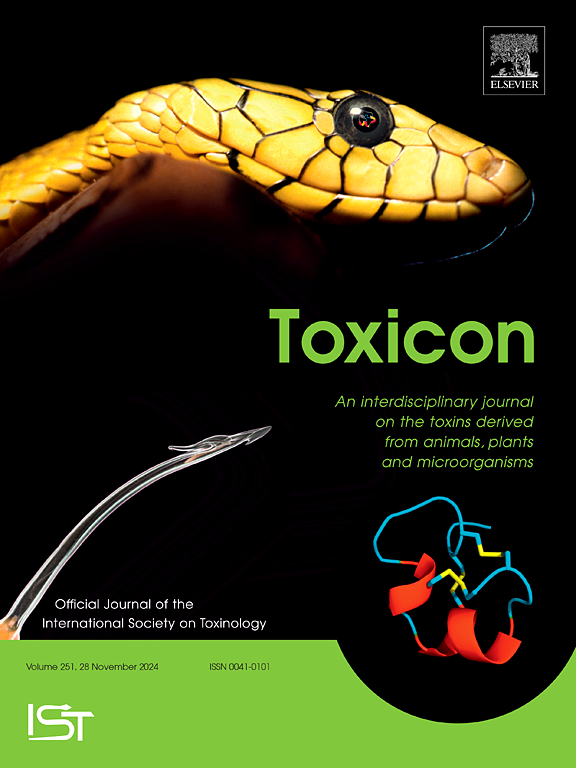Thamnophis sirtalis and their toxic relationship: Testing for intraspecific venom variation in Common Garter Snakes
IF 2.6
4区 医学
Q2 PHARMACOLOGY & PHARMACY
引用次数: 0
Abstract
Intraspecific phenotypic variation can be used as a window into the ecological differences among individuals of a species and lead to a better understanding of adaptive evolution. Adaptive traits, such as venom, that play an important ecological role for a species are useful models for understanding the sources of intraspecific variation. Intraspecific studies on front-fanged venomous snakes have offered deeper insights into the diverse mechanisms and adaptations that support the effectiveness of venom across species. Despite the extensive research on front-fanged venomous snakes, rear-fanged snakes, representing two-thirds of all snake species, have been largely overlooked. To test for sex and age-based intraspecific venom variation, we sequenced the messenger RNA from the Duvernoy’s gland of 9 male and 10 female Common Garter Snakes, Thamnophis sirtalis, of different sizes from a single location. Our data represent the most venom gland transcriptomes of any venomous snake species from a single location and represent the first Duvernoy’s venom gland transcriptomes for Thamnophis sirtalis. We found four toxin families dominate the Thamnophis sirtalis transcriptome: Snake Venom Metalloproteinases (SVMPs), Three-finger toxins (3FTxs), Cysteine-Rich Secretory Proteins (CRISPs), and C-type lectins (CTLs). Thamnophis sirtalis exhibits a unique balance in toxin expression, with approximately 30% each of neurotoxic (3FTx-dominated) and enzymatic (SVMP-dominated) components. No other published RFS Duvernoy’s gland transcriptome displays this ratio, rather they are dominated by one or the other. Additionally, venom expression varies with sex and size, with differences in toxin gene expression between males and females as they grow. Our study provides new insights on venom composition in a RFS species and highlights the amount of intraspecific variation possible among individuals from a single population.

求助全文
约1分钟内获得全文
求助全文
来源期刊

Toxicon
医学-毒理学
CiteScore
4.80
自引率
10.70%
发文量
358
审稿时长
68 days
期刊介绍:
Toxicon has an open access mirror Toxicon: X, sharing the same aims and scope, editorial team, submission system and rigorous peer review. An introductory offer Toxicon: X - full waiver of the Open Access fee.
Toxicon''s "aims and scope" are to publish:
-articles containing the results of original research on problems related to toxins derived from animals, plants and microorganisms
-papers on novel findings related to the chemical, pharmacological, toxicological, and immunological properties of natural toxins
-molecular biological studies of toxins and other genes from poisonous and venomous organisms that advance understanding of the role or function of toxins
-clinical observations on poisoning and envenoming where a new therapeutic principle has been proposed or a decidedly superior clinical result has been obtained.
-material on the use of toxins as tools in studying biological processes and material on subjects related to venom and antivenom problems.
-articles on the translational application of toxins, for example as drugs and insecticides
-epidemiological studies on envenoming or poisoning, so long as they highlight a previously unrecognised medical problem or provide insight into the prevention or medical treatment of envenoming or poisoning. Retrospective surveys of hospital records, especially those lacking species identification, will not be considered for publication. Properly designed prospective community-based surveys are strongly encouraged.
-articles describing well-known activities of venoms, such as antibacterial, anticancer, and analgesic activities of arachnid venoms, without any attempt to define the mechanism of action or purify the active component, will not be considered for publication in Toxicon.
-review articles on problems related to toxinology.
To encourage the exchange of ideas, sections of the journal may be devoted to Short Communications, Letters to the Editor and activities of the affiliated societies.
 求助内容:
求助内容: 应助结果提醒方式:
应助结果提醒方式:


